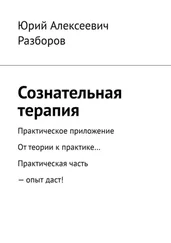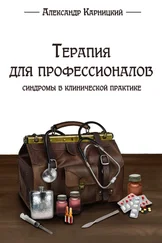Fonagy P., Leigh T., Steele M., Steele H., Kennedy R., Mattoon G., Target M. & Gerber A. (1996a). The relation of attachment status, psychiatric classification and response of psychotherapy. Journal of Consulting and Clinical Psychology, 64, 22–31.
Fonagy P., Steele M., Steele H., Target M. & Schachter A. (1996b). Reflective-Self Functioning Manual for application to Adult Attachment Interview. Unveröffentl. Manual. London: University College.
Fonagy P., Target M., Steele M., Steele H., Leigh T., Levinson A. & Kennedy R. (1997). Morality, disruptive behavior, borderline personality disorder, crime, and their relationship to security of attachment. In: L. Atkinson, K. J. Zucker (Hrsg.). Attachment and psychopathology. NY–London: Guilford Press, 223–276.
Fox N. A. (1992). Frontal brain asymmetry and vulnerability to stress: Individual differences in infant temperament. In: T. M. Field, P. M. McCabe & N. Schneiderman (Hrsg.). Stress and coping in infancy and childhood. Hillsdale, NJ: Erlbaum, 83–99.
Fox N. A. (1995). On the way we were: Adult memories about attachment experiences and their role in determining infant-parent relationships: A commentary on van IJzendoorn (1995), Psychological Bulletin, 117, 404–410.
Fox N. A., Kimmerly N. L. & Schafer W. D. (1991). Attachment to mother/attachment to father: A meta-analysis. Child Development, 62, 210–225.
Fraiberg S. (1982). Pathological defenses in infancy. Psychoanalytic Quarterly, 51, 623–634.
Fraiberg S., Adelson E. & Shapiro V. (1975). Ghosts in the nursery. A psychoanalytic approach to the problems of impaired infant-mother relationship. J. of the American Academy of Child and Adolescent Psychiatry, 14, 387–422.
Francis D., Diorio J., Liu D. & Meaney M. J. (1999). Nongenomic transmission across generations of maternal behavior and stress responses in the rat. Science, 286, 1155–1158.
Freud A. (1958/1960). Diskussion von John Bowlbys Arbeit über Trennung und Trauer. In: Schriften der Anna Freud, Bd. VI, München: Kindler, 1772–1788.
Freud A. (1980a). Anstaltskinder. Berichte aus den Kriegskinderheimen «Hampstead Nurseries» 1943–1945. In: Die Schriften der Anna Freud, Bd. III. München: Kindler.
Freud A. (1980b). Kriegskinder. Berichte aus den Kriegskinderheimen «Hampstead Nurseries» 1941–1942. In: Die Schriften der Anna Freud, Bd. II, München: Kindler.
Freud A. & Burlingham D. (1982). Heimatlose Kinder (2. Aufl.). Frankfurt/M.: S. Fischer.
Freud S. (1905). Drei Abhandlungen zur Sexualtheorie. In: Gesammelte Werke, Bd. I, Frankfurt/M.: S. Fischer, 27–145.
Freud S. (1916). Trauer und Melancholie. In; Gesammelte Werke, Bd. X, Frankfurt/M.:
S. Fischer, 428–446. Freud S. (1916/1917). Vorlesungen zur Einführung in die Psychoanalyse. In: Gesammelte Werke, Bd. XI, Frankfurt/M.: S. Fischer. Freud S. (1920). Jenseits des Lustprinzips. In: Gesammelte Werke, Bd. XIII, Frankfurt/M.: S. Fischer, 1–69. Freud S. (1926). Hemmung, Symptom und Angst. In: Gesammelte Werke, Bd. XIV, Frankfurt/M.: S. Fischer, 111–205. Friedman S. L. & Boyle D. E. (2008). Attachment in US children experiencing nonmaternal care in the early 1990s. Attachment & Human Development, 10, 225–261.
Friedman S. L. & Boyle D. E. (2009). Kind-Mutter-Bindimg in der NICHD-Studie «Early Child Care and Youth Development»: Methoden, Erkenntnisse und zukünftige Ausrichtungen. In: K. H. Brisch & T. Hellbrügge (Hrsg.). Wege zu sicheren Bindungen in Familie und Gesellschaft. Prävention, Begleitung, Beratung und Psychotherapie. Stuttgart: Klett-Cotta, 94–151.
Gallese V. (2003). The roots of empathy: The shared manyfold hypothesis and the neural basis of intersubjectivity. Psychopathology, 36, 171–180.
Geddes H. (2009). Bindung, Verhalten und Lernen. In: К. H. Brisch & T. Hellbrügge (Hrsg.). Wege zu sicheren Bindungen in Familie und Gesellschaft. Stuttgart: Klett-Cotta, 170–186.
Geiger U. (1991). Reaktionen sechsjähriger Kinder in imaginären Trennungssituationen. Unveröff. Diplomarbeit, Regensburg: Institut für Psychologie.
George C. & Solomon J. (1989). Internal working models of caregiving and security of attachment at age six. Infant Mental Health Journal, 10, 222–237.
George C. & Solomon S. (1994). Six-year-old attachment doll play procedures and classification system. Unveröffentli. Manuskript. Mills College, Oakland, CA.
George C. & Solomon J. (1996). Representational models of relationships: Links between caregiving and representation. Infant Mental Health Journal, 17, 198–216.
George C. & Solomon J. (1999a). Attachment and caregiving: The Caregiving behavioral system. In: J. Cassidy & P. R. Shaver (Hrsg.). Handbook of attachment: Theory, research and clinical applications. NY, London: Guilford Press, 649–670.
George C. & Solomon J. (1999b). The development of caregiving: A comparison of attachment theory and psychoanalytic approaches to mothering. Psychoanalytic Inquiry, 19, 618–646.
George C. & West M. (2001). The development and preliminary validation of a new measure of adult attachment: The Adult Attachment Projective. Attachment & Human Development, 3, 30–61.
George C., Kaplan N. & Main M. (1985). The Attachment Interview for Adults. Unveröffentl. Manuskript, Berkeley: University of California.
George C., West M. & Pettem O. (1997). Adult attachment projective: Protocol and classification scoring system. Oakland CA: Mills College.
George C., West M. & Pettem O. (1999). The Adult Attachment Projective: Disorganization of adult attachment at the level of representation. In: J. Solomon & C. George (Hrsg.). Attachment Disorganization. NY, London: Guilford Press, 318–346.
Gergely G., Fonagy P. & Target M. (2003). Bindung, Mentalisierung und die Ätiologie der Borderline-Persönlichkeitsstörung. In: P. Fonagy & M. Target (Hrsg.). Frühe Bindung und psychische Entwicklung. Gießen: Psychosozial-Verlag, 219–231.
Gervai J. (2008). Einflüsse von Genetik und Umwelt auf die Entwicklung von Bindungsverhaltensweisen. In: K. H. Brisch & T. Hellbrügge (Hrsg.). Der Säugling– Bindung, Neurobiologie und Gene. Stuttgart: Klett-Cotta, 185–206.
Gervai J. & Lakatos K. (2004). Comment on “No association of the dopamine D4 receptor (DRD4) and –521 C/T promotor polymorphisms with infant attachment disorganization” by M. J. Bakermans-Kranenburg & M. H. van IJzendoorn. Attachment & Human Development, 6, 219–222.
Gloger-Tippelt G. (Hrsg.) (2001). Bindung im Erwachsenenalter. Bern (Huber).
Gloger-Tippelt G. & König L. (2000). Kodier– und Auswertungsmanual für das Geschichtenergänzungsrverfahren zur Erfassung der Bindungsrepräsentationen 5 bis 7 jähriger Kinder im Puppenspiel. Unveröffentl. Manual. Heinrich-Heine-Universität Düsseldorf, Psychologisches Institut.
Gloger-Tippelt G. & König L. (2009). Bindung in der Kindheit. Das Geschichtenergänzungsverfahren zur Bindung. Weinheim: Beltz.
Gloger-Tippelt G., Gomille B., König L. & Vetter J. (2002). Attachment representations in 6-year-olds: Related longitudinally to the quality of attachment in infancy and mothers’ attachment representations. Attachment & Human Development, 4, 318–339.
Glover V. & O’Connor T. G. (2002). Effects of antenatal stress and anxiety. The British Journal of Psychiatry, 180, 389–391.
Goldberg S. (1997). Attachment and childhood behavior problems in normal, at-risk, and clinical samples. In: L. Atkinson & K. J. Zucker (Hrsg.). Attachment and psychopathology. NY–London: Guilford Press, 171–195.
Goldberg S., Muir R. & Kerr J. (Hrsg.) (1995). Attachment theory: Social, developmental, and clinical perspectives. Hillsdale, NJ: The Analytic Press.
Grawe K. (1998). Psychologische Therapie. Göttingen–Bern–Toronto–Seattle: Hogrefe.
Greenberg M. T. & Marvin R. S. (1982). Reactions of preschool children to an adult stranger: A behavioral systems approach. Child Development, 481–490.
Читать дальше
Конец ознакомительного отрывка
Купить книгу






